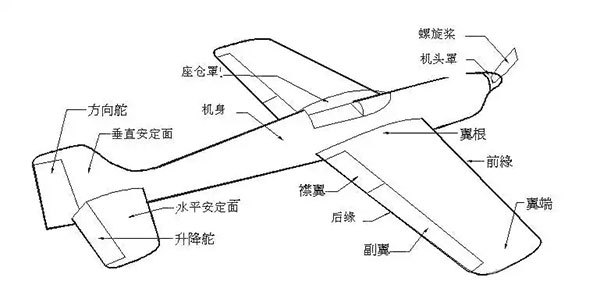Uncovering the Five Basic Structures of Fixed-Wing Drones and Their Functions
Release time:
2025-05-30
Source:
let's explore the mysteries of fixed-wing drones together. Next, we'll dive into these infrastructures and their role in the drone.
First, let's explore the mysteries of fixed-wing drones together. Next, we'll dive into these infrastructures and their role in the drone.
1.Overview of Fixed-Wing Drones
Pay attention to the following diagram, which will lead us to an in-depth understanding of the five basic structures of this vehicle.

The diagram above clearly shows the main structures and component names of a conventional fixed-wing UAV. Next, we will deeply analyze these basic structures and their roles in the UAV. To help you understand more clearly, we have created a relationship diagram so that you can better grasp the overall structure and function of a fixed-wing UAV.
2. Infrastructure Details
▲ 2.1 Engine Function
The engine is the core component of the vehicle, and its role is to generate the forward thrust or pull that drives the vehicle.
▲ 2.2 Airframe functions
The fuselage is the main load-bearing structure of a vehicle and is used to carry a variety of equipment and systems, as well as to connect and support other components, such as the wings, tail, and engines.
▲ 2.3 Wing Functions
The wing is the key component of a vehicle that generates lift, and through the design and shape of the wing, enough lift can be generated to support the vehicle in the air. At the same time, the wing also plays a certain stabilizing and maneuvering role, through the manipulation of the ailerons, it can realize the roll and turn of the vehicle.
▲ 2.4 Role of the Tail
The role of the tail is to manipulate the pitch and yaw motion of the vehicle to ensure the smooth flight of the vehicle. The tail consists of horizontal and vertical tail, and the attitude control of the vehicle can be realized by adjusting its angle and position.
▲ 2.5 Landing Gear Function
The landing gear is an important support component for the aircraft during takeoff, landing and ground taxi. It can support the weight of the aircraft and help it take off, land and park smoothly. The design and layout of the landing gear has an important influence on the stability and maneuverability of the aircraft.
3. Other systems
In addition, fixed-wing UAVs include many other complex systems and components, such as control systems, power systems, sensors, and so on. These components work together to enable fixed-wing UAVs to accomplish a variety of complex flight tasks.
Previous page
Other News
The Significance of FPV Drone Development
The development of FPV drones is reshaping modern warfare while driving progress in technology, education, and the economy.
How to Make a Flying Machine Hover Stably
Attitude mode (attitude mode): at this time the remote control is controlling the tilt angle of the aircraft.
How Emergency Rescue Drones Work
UAVs have easy access to a wide range of payloads such as cameras and thermal imaging cameras.
Uncovering the Five Basic Structures of Fixed-Wing Drones and Their Functions
let's explore the mysteries of fixed-wing drones together. Next, we'll dive into these infrastructures and their role in the drone.
Drone Technology: Basic Theoretical Knowledge of Drones in Detail
Unmanned Aerial Vehicle (UAV) is a vehicle that can be operated in flight without the need for an on-board crew.


